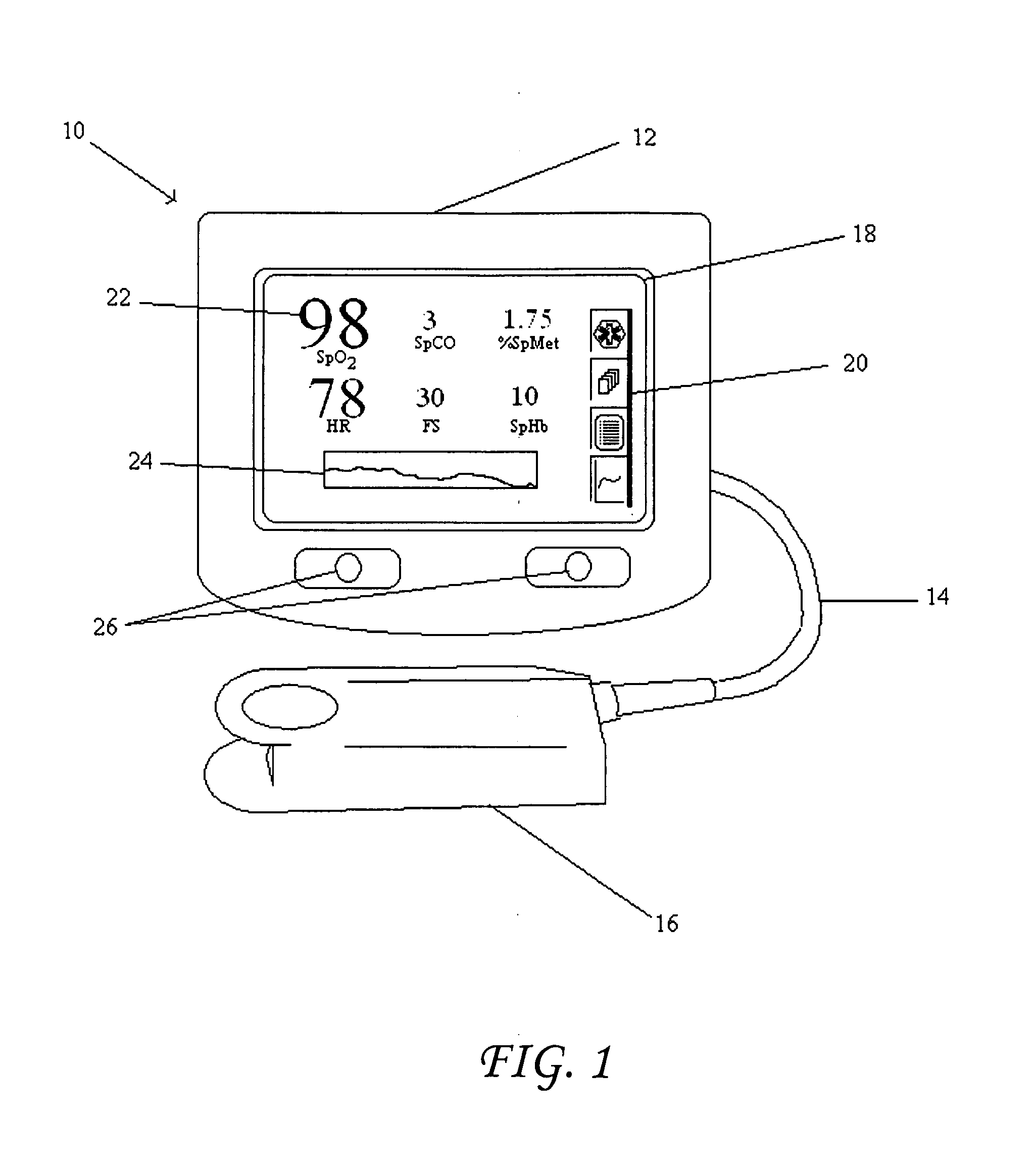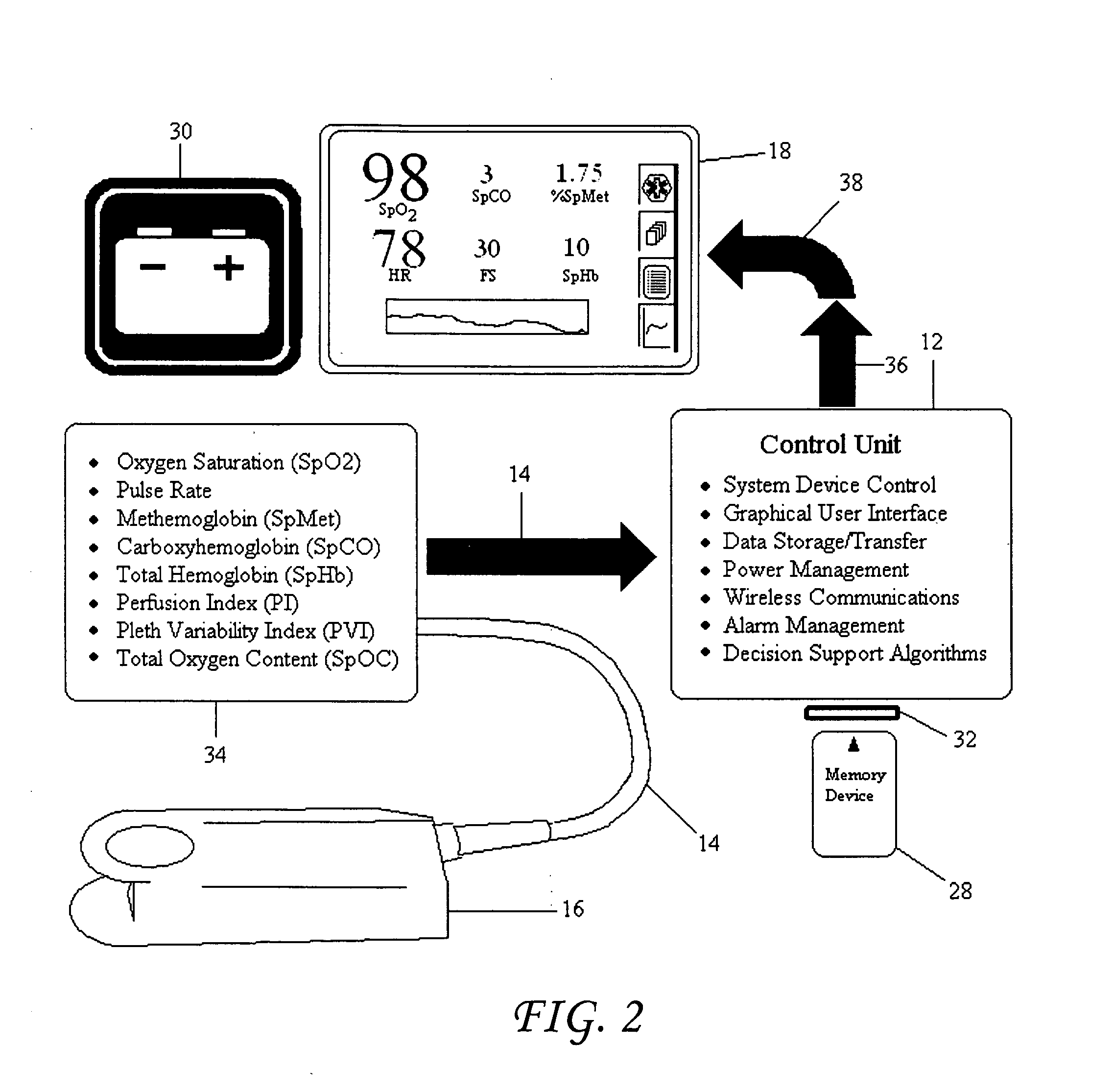Decision support method for casualty treatment using vital sign combinations
a technology of vital sign and support method, applied in the field of decision support system, can solve the problems of organ damage and in turn death, damage to multiple organs, heavy external or internal bleeding,
- Summary
- Abstract
- Description
- Claims
- Application Information
AI Technical Summary
Benefits of technology
Problems solved by technology
Method used
Image
Examples
Embodiment Construction
[0029]Referring to the figures, FIG. 1. illustrates a preferred embodiment of the hand-held vital sign monitor 10. The hand-held vital sign monitor 10 generally includes a meter 16, such as a finger cuff, for reading patient vital signs. The meter or oximeter 16 is in communication with the control unit 12 via a cable 14, although it is anticipated that the cable 14 could be replaced with a wireless signal between the meter 16 and the control unit 12. The meter 16 is connected appropriately to the patient in order to allow it to read the patient's vital signs. If, for example, the meter 16 is a finger cuff similar to that shown in FIG. 1, then it would be placed on the patient's finger. If necessary, multiple meters 16 could be employed in order to measure different vital signs or the vital signs of multiple patients.
[0030]The hand-held vital sign monitor 10 also generally includes a control unit 12. The control unit 12 uses innovative technology and materials to make it relatively ...
PUM
 Login to View More
Login to View More Abstract
Description
Claims
Application Information
 Login to View More
Login to View More - R&D
- Intellectual Property
- Life Sciences
- Materials
- Tech Scout
- Unparalleled Data Quality
- Higher Quality Content
- 60% Fewer Hallucinations
Browse by: Latest US Patents, China's latest patents, Technical Efficacy Thesaurus, Application Domain, Technology Topic, Popular Technical Reports.
© 2025 PatSnap. All rights reserved.Legal|Privacy policy|Modern Slavery Act Transparency Statement|Sitemap|About US| Contact US: help@patsnap.com



